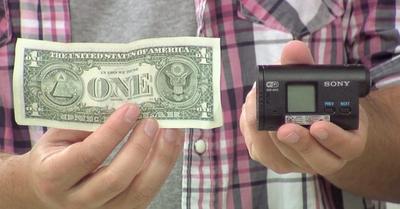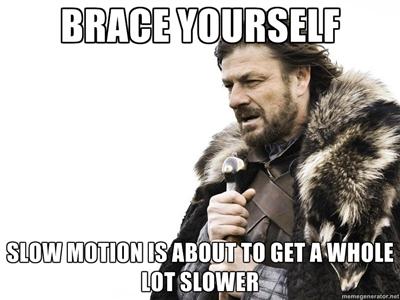Damn, I like this one. Sony has an amazing reputation too. I'd buy this.
Pictures from same source.
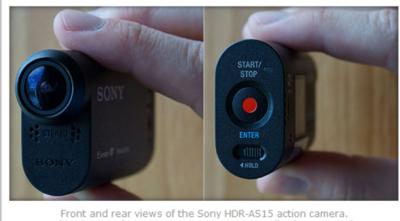
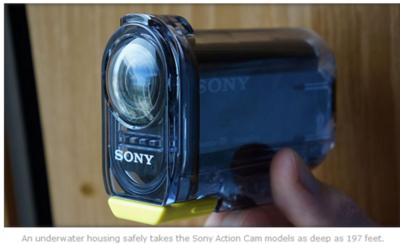
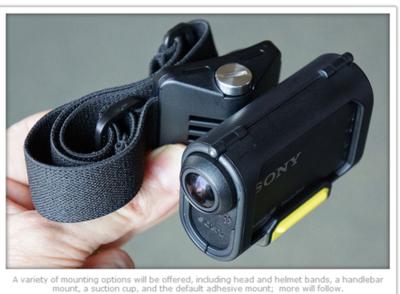
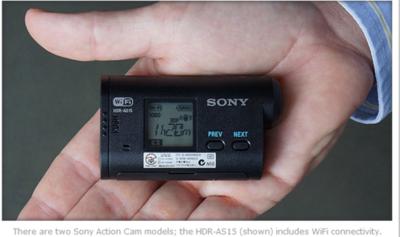 http://www.imaging-resource.com/news/2012/08/30/sony-treads-on-gopros-turf-with-wifi-capable-action-cam-series
http://www.imaging-resource.com/news/2012/08/30/sony-treads-on-gopros-turf-with-wifi-capable-action-cam-series
"Last month, we told you about Sony's plans to launch a rival to action cameras like Woodman Labs' GoPro. At the time we didn't have a name for the camera--or cameras plural, as it turns out--but it wouldn't have been hard to guess. Today Sony has launched its new cameras under the entirely logical Action Cam brandname. Neither the Sony Action Cam HDR-AS10 and HDR-AS15 cameras could be said to comprehensively best GoPro's HD Hero2 model, but they offer a strong enough challenge that we'd imagine the folks at Woodman will be holding some rather tense meetings to discuss their response.
Sony's Action Cam models share most of their feature set, and base everything around a 16.8 megapixel, 1/2.3-inch backside-illuminated Sony Exmor R CMOS image sensor. By contrast, GoPro uses a standard 1/2.3-inch CMOS chip with 11 megapixel resolution. However, that doesn't quite tell the whole story: Sony is masking off much of the sensor, and using only a 16:9 stripe of 11.9 megapixels to create footage. That still places more sensor pixels on your subject than would the GoPro, however.
There are two Sony Action Cam models; the HDR-AS15 (shown) includes WiFi connectivity.
Photo copyright © 2012, Imaging Resource. All rights reserved.
Sadly, the Action Cams don't seem to offer any aspect-ratio options other than 16:9. Nor, for that matter, do they include any resolution choices above 1,920 x 1,080 pixels. GoPro thus wins on the resolution front, as it does offer the ability to capture stills at up to 11 megapixels with the Hero2 model. (There's still the potential for Sony to impress with video quality if the binning algorithms are good, though, especially remembering that it has the advantage of backside-illumination. That will negate some of the advantage GoPro's sensor would have in terms of pixel size.)
In terms of resolutions and frame rates, GoPro's latest model offers 30fps at Full HD (1,920 x 1,080); 30 or 48 fps at 1,280 x 960; 30 or 60 fps at 720p (1,280 x 720); and 60 or 120 fps at 848 x 480. Sony's cameras lack the non-standard resolutions, sticking to a choice of only Full HD, 720p, or VGA (640 x 480). They match the GoPro at Full HD, and offer double its framerate at 720p, featuring the 120 fps rate that GoPro only allows at standard-def resolution. Finally, Sony's cameras yield 30 fps at VGA resolution.
Front and rear views of the Sony HDR-AS15 action camera.
Photos copyright © 2012, Imaging Resource. All rights reserved.
Both companies offer time-lapse recording, but GoPro offers a greater range of interval times. Where Sony allows one frame every 5, 10, 30, or 60 seconds, GoPro also allows one shot every two seconds.
Sony looks to have an advantage in another area, though. Although both the Action Cam and GoPro have f/2.8 lenses and a maximum 170 degree field of view, Sony offers SteadyShot Active digital image stabilization. While we typically prefer optical or sensor-shift stabilization, these likely aren't conducive to a small, light, and rugged camera. In the case of an action camera, digital stabilization makes sense, and could make quite a difference to out-of-camera video. Cameras mounted on helmets, vehicles, and the like typically yield notoriously shaky footage. If Sony's stabilization can solve that out of camera, it's a win for action videographers.
An underwater housing safely takes the Sony Action Cam models as deep as 197 feet.
Copyright © 2012, Imaging Resource. All rights reserved.
More significant is that one of Sony's two models--the HDR-AS15--includes built-in WiFi capability which can be used to control the camera remotely, and to share your videos and photos. That's all possible with the GoPro too, but requires a bulky external accessory. If you ignore the WiFi capability, GoPro has an edge on size, with a ~20% smaller body, but the addition of the WiFi Bacpac likely more than negates that advantage. Even without WiFi the Sony cameras already win on ready-to-shoot weight, but only by a very slight margin. Add the WIFi Bacpac to the GoPro though, and it weighs almost a quarter more than the Sony Action Cam HDR-AS15.
Depending on your use the difference in shape may also be important. Where the GoPro is pretty bricklike, Sony's Action Cam models are more aerodynamic, with less than half the frontal area. Sony also includes a built-in stereo microphone, where the GoPro HD Hero2 has only a monaural internal mic, and must rely on an external mic for stereo sound. (Although that could be seen as a win for GoPro, since it lets you place the mic where you want it, and choose a mic type conducive to good audio capture; Sony's cameras lack external microphone connectivity.
Sony plans to offer optional housing doors with improved underwater audio and video quality.
Copyright © 2012, Imaging Resource. All rights reserved.
In terms of rugged, weatherproof capabilities, neither Sony's Action Cam models nor the GoPro series are action-proofed out of the box. Both require an external housing to accomplish this, and so far we don't have any details on the exact size and weight of Sony's housing. We do know that it's said to be dustproof and waterproof to 60 meters / 197 feet, though, precisely matching GoPro's housing. Both companies include the housing in the standard product bundle.
The GoPro is known for its wide range of mounting options, and Sony likewise offers a good number of choices. The Action Cam models ship with adhesive mounts, but launch options include a wearable head band, waterproof head mount kit, handlebar mount, suction cup mount, and additional adhesive mounts. These will be joined by a handheld grip with LCD screen (something GoPro also offers as an accessory), plus a tilt adaptor, replacement doors for the underwater housing that improve image quality and audio underwater, and an anti-fog sheet to prevent condensation build-up.
A variety of mounting options will be offered, including head and helmet bands, a handlebar mount, a suction cup, and the default adhesive mount; more will follow.
Copyright © 2012, Imaging Resource. All rights reserved.
Available from September 2012, Sony is pricing its new models at about US$200 for the base HDR-AS10, and US$270 for the WiFi-capable HDR-AS15. Even if you add the optional mounts into the equation, that's significantly cheaper than Woodman's GoPro HD Hero2 cameras, which sell for US$300 with a couple of mounts, plus US$60 for the WiFi Bacpac.
All things considered, the Sony Action Cam HDR-AS10 and HDR-AS15 look to offer an interesting alternative to the GoPro HD Hero2, with some compelling reasons to consider switching from the more-established brand. It'll be interesting to see how they perform in the market, and how Woodman Labs answers the presence of a significant new challenger on turf it has long dominated."
